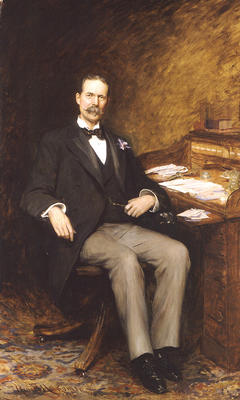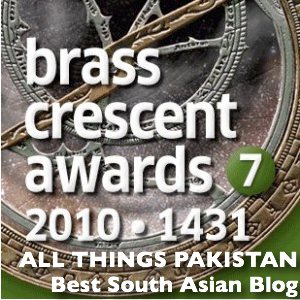I am sitting in front of my computer, listening to my favorite “Vital Signs” song:
Ye shaam phir nahi aaye gi
(This evening won’t come again)
I am smiling and sipping on my favorite Lipton Tea, while my fingers are keying in this moment in time.
All in all, a very coordinated effort is going on between my mind and soul. But take “Lipton tea” out of this equation and I’ll be left to a bored-to-death person listening to an archaic ancient group which historians remember by the name of ‘Vital Signs’ from early 90s and writing these disjointed words.
“Lipton Tea” – these two words stir deep memories in me. The earliest memory of Lipton tea in my life is drinking it with my maternal great grandfather (paR-nana).
 This portrait to the left, by the way, is of Sir Thomas J Lipton; not of my paR-nana!).
This portrait to the left, by the way, is of Sir Thomas J Lipton; not of my paR-nana!).
My great grand father was born in 1896 and lived till 1986. Until his last days he had a habit of making a cup of tea around 3 pm, and whenever I was around (which I always was) he used to pour some tea in my cup too. After that both of us would start watching PTV which started its daily transmission around 4 p.m. and sip on our tea.
Grandfather had migrated to Pakistan from India in 1947. He used to tell me all these great political stories from the old days, the Caliphate Movement, First World War, Quit-India Movement, Second World War, the Pakistan movement and finally the emergence of Pakistan.
He told me that until 1900s not many people in India knew about drinking tea (except for the tea growing areas of Darjeeling/Assam etc). British and whatever was left of East India Company at that time owned all the tea plantations in India, Ceylon (SriLanka), and Africa. Raw tea leaves were sent to London at Lipton Tea Company and after being processed and packed, was brought back to India and sold at exorbitant prices to the local people, on whose land the tea grew in first place.
Grand father told me that in the early 1900s Britishers used to set tea-stalls at street corners all over India and used to offer ‘free’ tea cups to Indians to promote the Lipton brand. In the beginning tea drinking was fashion at the high echelons of Indian society. Nawabs, and Rajas used to drink it in parties but within years its use grew all around and it even reached the far-flung villages of India.
 The accompanying picture to the right is a tablet that was placed at Bahawalnagar railway station in early 20th century. It is now placed in Pakistan Railway’s Heritage Museum at Golra Sharif near Islamabad. It advertises making of hot tea in 5 different written scripts; English, Devnagri, Urdu, Gormukhi and Bengali.
The accompanying picture to the right is a tablet that was placed at Bahawalnagar railway station in early 20th century. It is now placed in Pakistan Railway’s Heritage Museum at Golra Sharif near Islamabad. It advertises making of hot tea in 5 different written scripts; English, Devnagri, Urdu, Gormukhi and Bengali.
Grand father told me that drinking tea at 3:00 p.m. sharp was a British tradition brought to India. British used to drink tea two times a day en-mass. First time was at 3:00 p.m. (called ‘low tea’) and then again at 6:00 p.m. (called ‘high tea’). Low tea and high tea were the names given to this tea drinking habit just like breakfast-lunch-dinner.
The invention of the habit of afternoon tea is credited to Anna, Duchess of Bedford, who in about 1840 began taking tea with sandwiches and cakes to ward off “that sinking feeling” around four o’clock in the afternoon. Since the upper classes ate dinner fashionably late, Anna and her friends found that tea and small cakes were perfect to tide them over between lunch and dinner. Her idea soon became the fashion, and an English institution was born called ‘low tea’.
I guess grandfather and I kept the tradition alive in Karachi till 1986.
Last time I was in Pakistan I saw tea stalls and tea-shops at almost every street corner. It looks like the whole population now craves tea. And it is a part of our daily life. I won’t say its addiction, but would rather recite the famous sher by plagiarizing it a bit:
Chai se gharz-e-Nishat hai kis roo-siaah ko
Ik gona-e-bay-khudi mujhay har dum chahiyay
(Who the cursed-face needs pleasure out of tea
All I need is a place of solitude.)
Tea is also an essential part of Urdu literature. Shafiq-ur-Rehman who along with Mushtaq Ahmed Yousufi is perhaps the greatest humor writer of Urdu invented the term chuhaas which rhymes with pyaas(thirst) and means a thirst of tea.



















































Roshan
thanks for rasing these important economic implications of our tea consumption…. a LOT of friegn exchange is spent on this…… so, beyond the romancce of drinking tea (which I also drink too much of), there is teh question fo the political ecconomy of this gift of teh British!
By the way, your message also reminded me of our earlier discussion on Anwar Masood’s poetry and his other famous poem where Chai (tea) and Lassi battle it out!
I was involved in a study regarding the dairy scenario of Pakistan. It was one of the findings that tea consumption has surpassed our cultural lassie (yogurt drink) in rural areas. According to FAO, Pakistan is the third largest importer and seventh largest consumer of tea. It imported 109k tonnes in 2003: http://www.fao.org/docrep/meeting/009/j5278e.htm#P 88_4639
We got the free cups and now pouring lot of money in tea import.
By the way I love to drink tea!!!
I love tea, and I love coffee. This same moment occured to me today at around 4:20 pm in Islamabad, where I made tea, with Lipton and added half a spoon of Maxwell House to it. A little milk and 1 and a Half sugar! A great accompanying story, Mr. Owais.
The stories are incredible..thanx Owais !
growing up, my parents made sure that I dont become a tea guzzling addict like them, so they only allowed me to have tea at special occasions…even now I only have tea on weekends and parties…About ten years ago, I was introduced the “Doodh Patti” Style in which you put very little amounts of water and tons of milk and loose patti and cook for hours….good with elaichi…ever since then, Ive been only drinking doodh patti…I cant stand the taste of a “Tea Bag” chai anymore, because of the taste of the paper.
My favourite brands:
1. Wagh Bakri Tea (From Gujrat, India). I started avoiding Indian products a little while ago, that when I also quit this brand.
2. Tapal Danedar…very good and strong tea from Pakistan.
3. Brook Bond.
The story I had heard was of the tea company going around teh gallis of Delhi offering free cups (tastes) of tea to get people to take up drinking tea…. interestingly, they did this on bicyccles… yes, they supposedly had large vates of tea being made where teh bicycle carrier is.. that woudl heat water which woudl be poured into small cups and people coudl get a free taste…. at least, that is teh story I heard